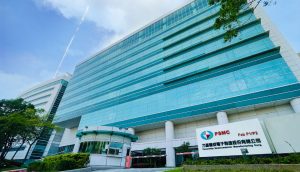Popular Keywords
- About Us
-
Research Report
Research Directory
Semiconductors
LED
Consumer Electronics
Emerging Technologies
- Selected Topics
- Membership
- Price Trends
- Press Center
- News
- Events
- Contact Us
News

Powerchip Semiconductor Manufacturing Corporation (PSMC) held the inauguration ceremony for its new Tongluo plant on May 2nd. This investment project, totaling over NTD 300 billion for a 12-inch fab, has completed the installation of its initial equipment and commenced trial production. According ...
News

The demand for AI computing power is skyrocketing, with advanced packaging capacity becoming key. As per a report from Commercial Times citing industry sources, it has pointed out that TSMC is focusing on the growth potential of advanced packaging. Southern Taiwan Science Park, Central Taiwan Sci...
News

In a bid to catch up with leading players like TSMC, the South Korean government is said to have approved a national-level initiative aimed at actively promoting the development of advanced chip packaging technologies, according to a report from South Korean media outlet TheElec. Citing anonymou...
News

NVIDIA's upcoming next-generation high-end AI chip, the H200, is on the horizon. As per a report from Economic Daily News, currently, the mainstream high-end H100 chip has seen a decline in demand, putting an end to the previous state of supply shortages. As per the same report, Taiwanese contra...
News

TSMC today unveiled its newest semiconductor process, advanced packaging, and 3D IC technologies for powering the next generation of AI innovations with silicon leadership at the Company’s 2024 North America Technology Symposium. TSMC debuted the TSMC A16TM technology, featuring leading nanoshe...